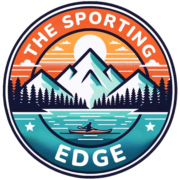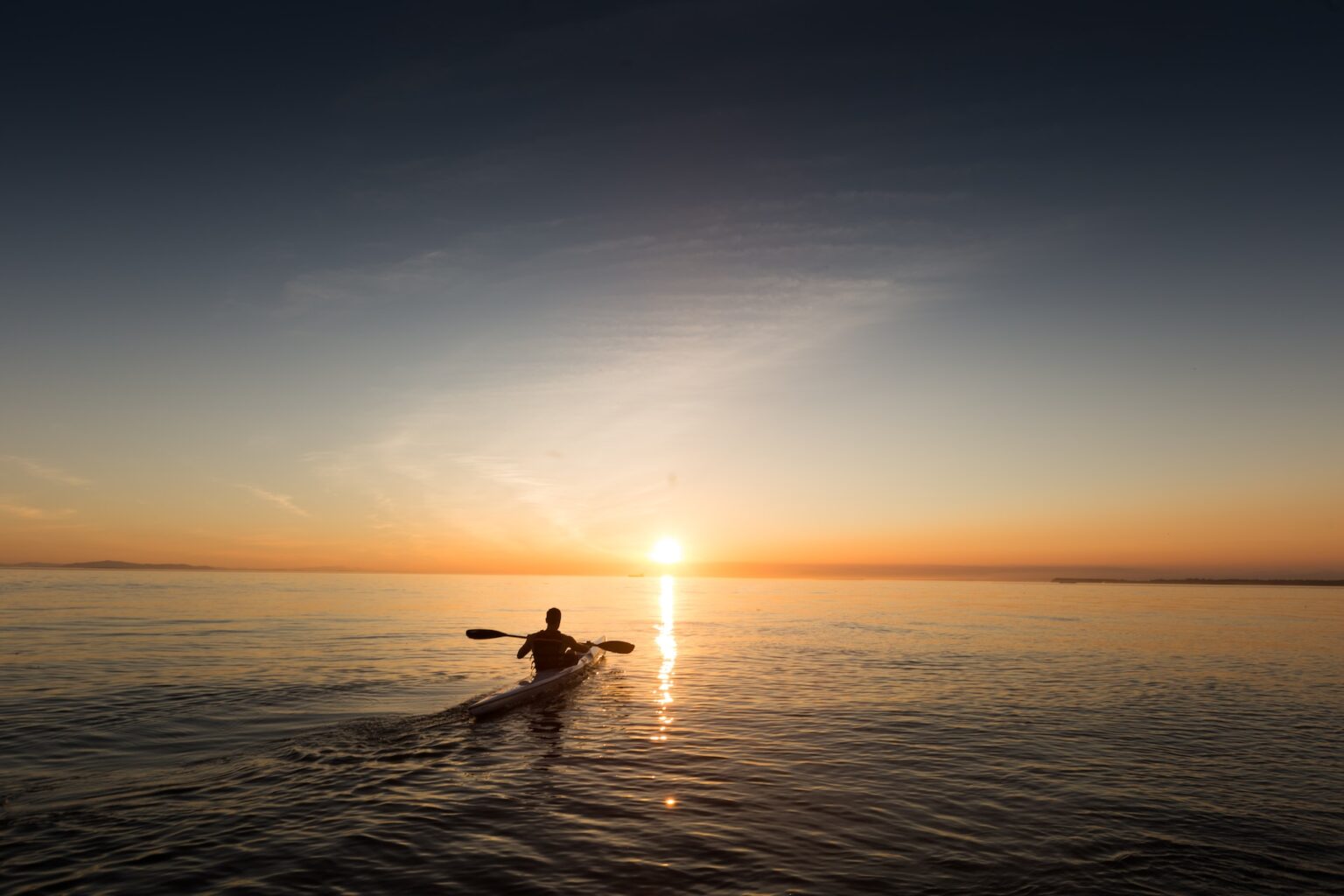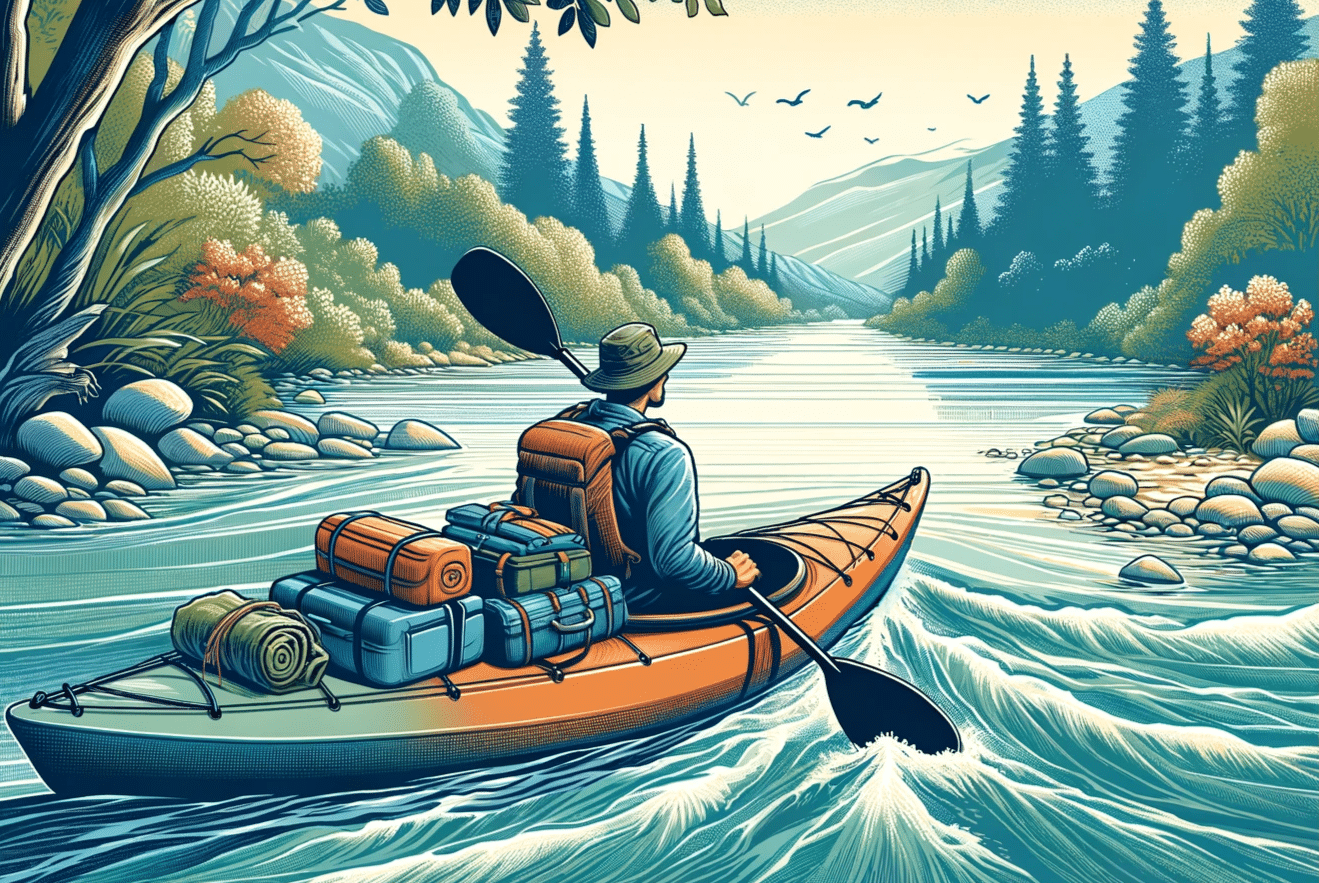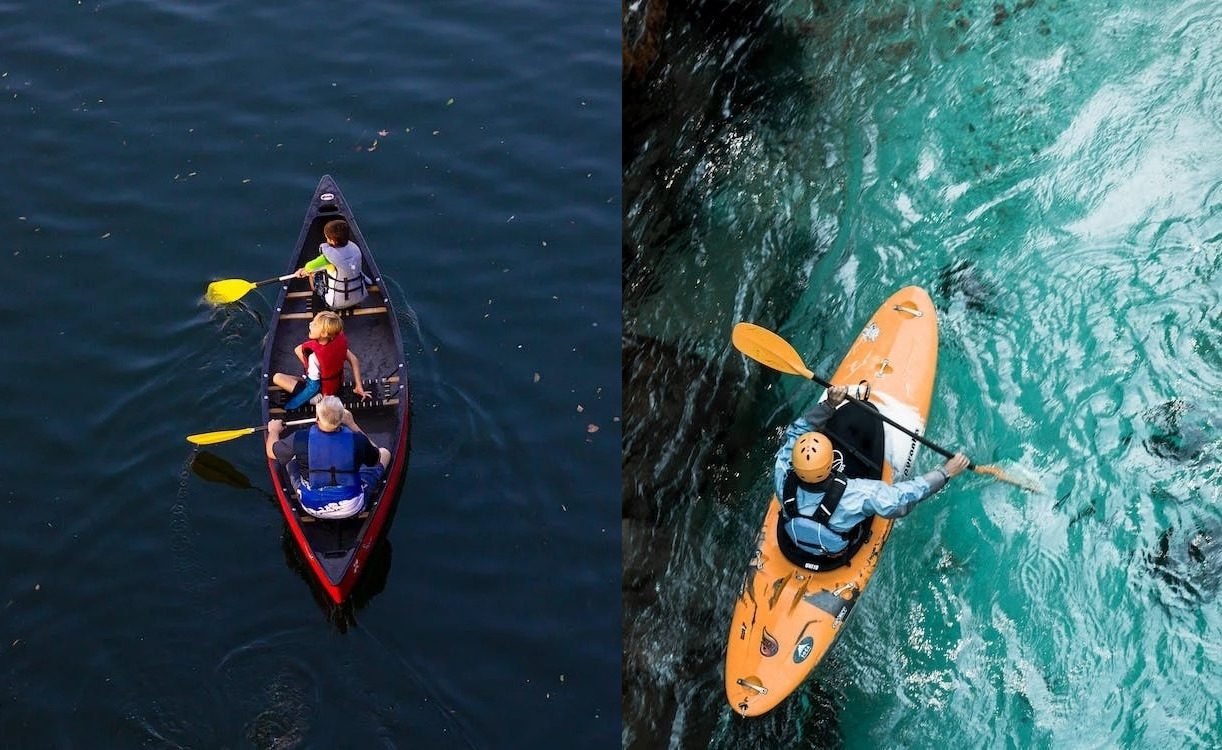So, you’re intrigued by the idea of sea kayaking? You’re not alone. The allure of paddling through open waters, feeling the ocean breeze, and encountering marine life up close is something many dream of, but few leap to experience. In this guide, we’ll simplify sea kayaking for beginners, detailing what sets these kayaks apart, essential gear, and skills you’ll need. Whether you’re planning your first trip or just curious, this guide aims to prepare you for an unforgettable sea kayaking adventure.

Sea Kayaking – Key takeaways
☑️ What distinguishes a sea kayak from other types? Sea kayaks are designed for open waters with features like longer bodies for speed and tracking, pointed bows and sterns for slicing waves, and ample storage for gear.
☑️ What essential gear should you have for sea kayaking? Key items include a sturdy paddle, a Coast Guard-approved life jacket, a spray skirt, dry bag, and safety equipment like flares and a first aid kit.
☑️ Why is understanding sea conditions important for kayaking? Recognizing the difference between rough and calm waters and adapting to various water temperatures and seasonal changes is vital for safety and enjoyment.
☑️ Which skills are crucial for a safe sea kayaking experience? Basic paddling techniques, emergency maneuvers like the wet exit and T-rescue, and maintaining physical fitness for strength and endurance are essential.
The Sea Kayak: What Sets It Apart?
Anatomy of a Sea Kayak
The moment you lay eyes on a sea kayak, you’ll notice that it’s a different breed. Designed for the challenges and surprises of the open ocean, modern sea kayaks have specific features that set them apart from their river and lake counterparts. One of the defining characteristics is their length; they’re generally longer to enhance speed and tracking. Another feature is the pointed bow and stern, designed to slice through waves and reduce drag.
Storage is another area where sea kayaks excel. With sealed hatches and compartments, they offer ample space for gear, food, and other essentials for extended trips. In a nutshell, every element of a sea kayak is tailored to provide the stability, speed, and storage capacity needed for ocean paddling.
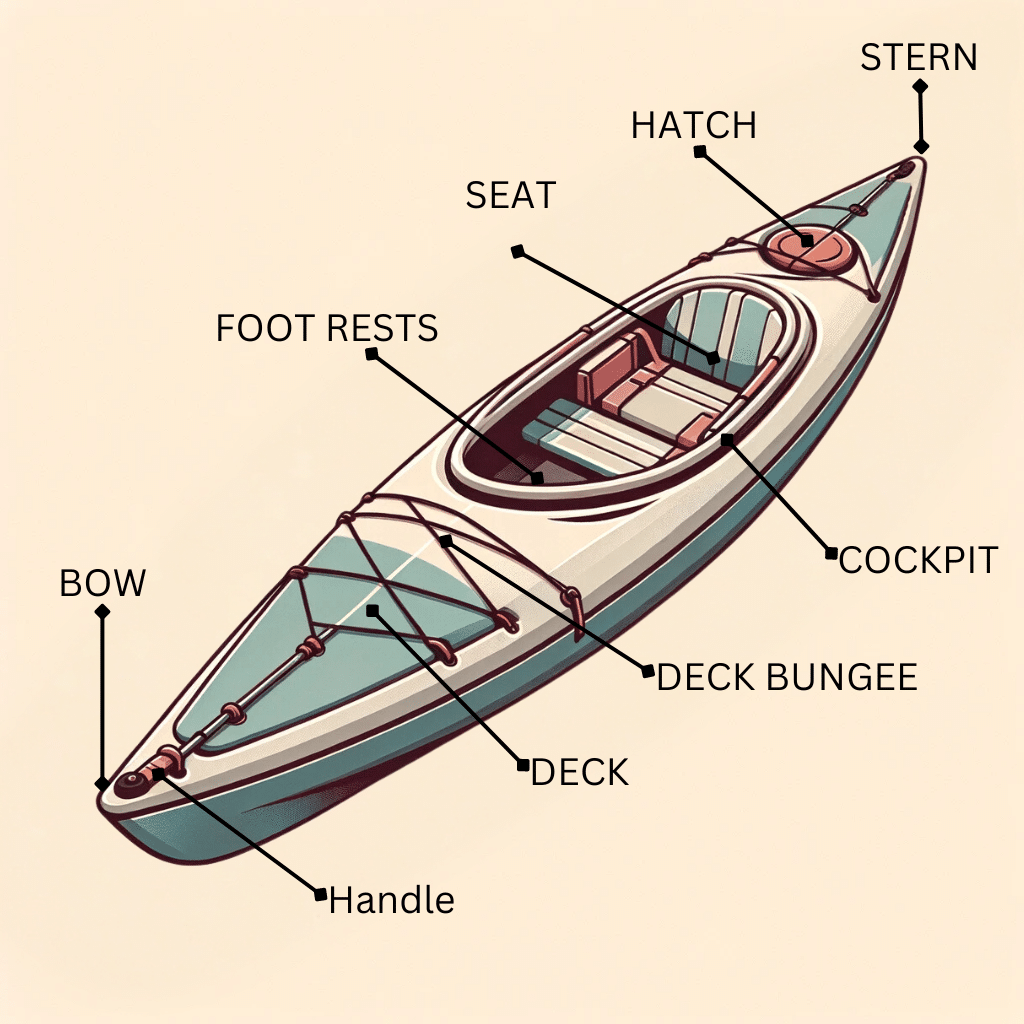
Types of Sea Kayaks
When it comes to selecting a sea kayak, there’s a range of options to consider. Let’s break down the pros and cons of the most common types:
Rigid Kayaks
Pros:
- Superior speed due to streamlined design.
- Excellent tracking and stability.
Cons:
- More difficult to store and transport.
- Usually more expensive than other types.
Rigid kayaks are often the first choice for serious kayakers who value speed and performance. They’re constructed from materials like fiberglass or carbon fiber, which contribute to their higher price tag but also offer durability.
Inflatable Kayaks
Pros:
- Easy to store and transport.
- Generally more affordable.
Cons:
- Slower due to less streamlined shape.
- More susceptible to punctures.
Inflatable kayaks are ideal for those who may not have the space to store a rigid kayak. They can be packed into a small bag and inflated when you’re ready to hit the water.
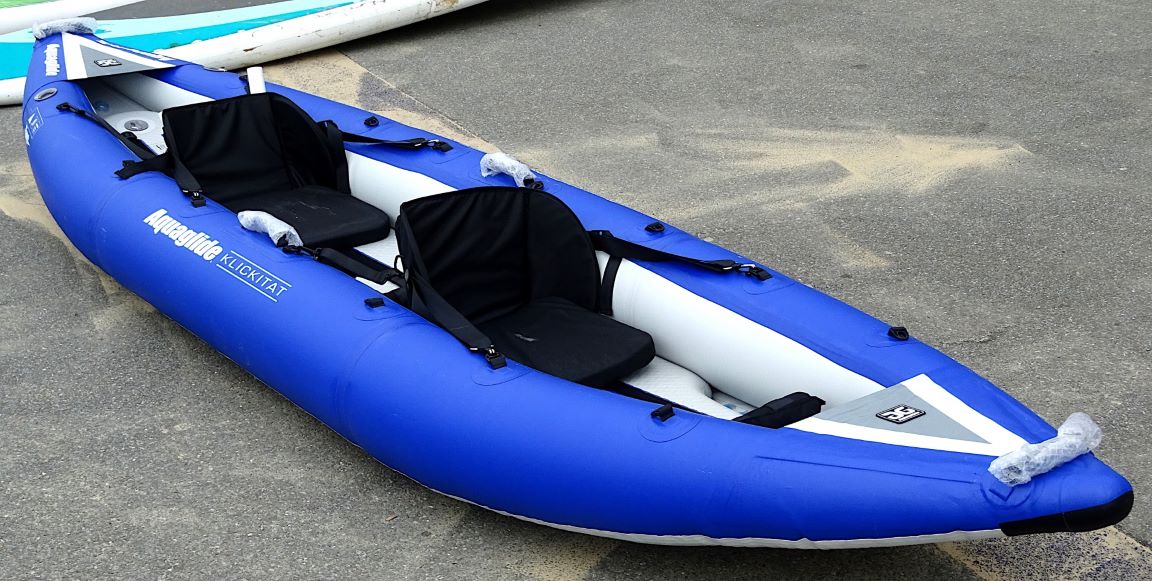
Tandem Kayaks
Pros:
- Allows for social kayaking experiences.
- Can be faster with coordinated paddling.
Cons:
- Requires teamwork and coordination.
- Limited storage space per person.
Tandem kayaks are great for couples or friends who want to share the paddling workload. They often come in both rigid and inflatable options.
Expedition Kayaks
Pros:
- Extra storage space for extended trips.
- Built for long-distance paddling.
Cons:
- May be overkill for casual or day-trippers.
- Can be costly.
- Hard to transport, as they can be heavy.
Expedition kayaks are the SUVs of the sea kayaking world. They are equipped with multiple storage compartments and are built for long, multi-day journeys.
Choosing the right sea kayak depends on your needs, skills, and the kind of adventures you wish to embark on. Whether you opt for a rigid, inflatable, tandem, or expedition kayak, each type has its unique set of advantages and disadvantages. So weigh your options carefully and make your pick; the ocean awaits!
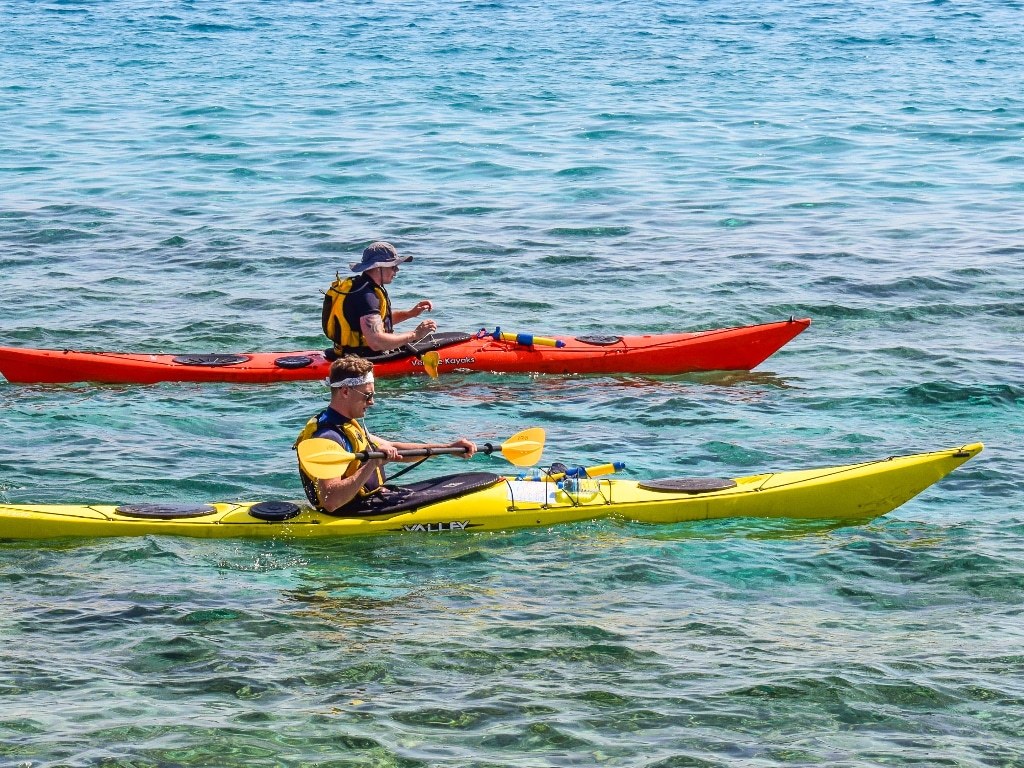
Essential Gear and Equipment
Before you set out on your sea kayaking adventure, it’s crucial to be well-equipped. Your gear can make the difference between a joyful experience and a potentially dangerous situation. So, let’s dive into the must-have items, safety equipment, and some optional add-ons that could elevate your kayaking journey.
Must-Have Gear
Your kayak is just one piece of equipment. Here’s a list of essentials you should never leave shore without:
- Paddle: Opt for a lightweight, yet sturdy paddle for efficient rowing.
- Life Jacket: Make sure it’s approved by the Coast Guard for maximum safety.
- Spray Skirt: Keeps water out of the kayak’s cockpit, allowing you to navigate through waves with ease.
- Dry Bag: To keep your personal belongings, like smartphones and cameras, safe and dry.
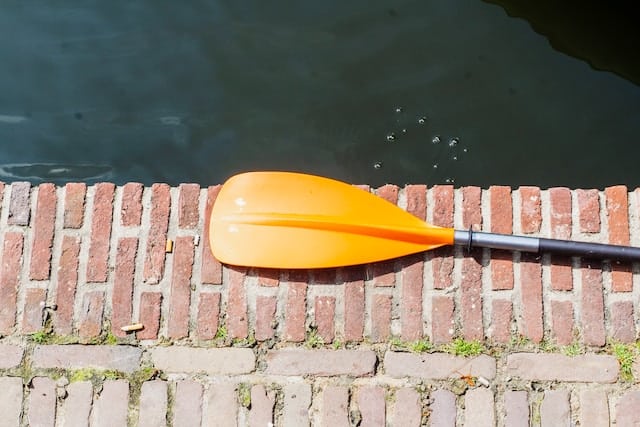
Safety Equipment
- Flares and Signaling Devices: In case you get lost or need to signal for help.
- First Aid Kit: For minor injuries or medical emergencies.
- Whistle: A simple but effective way to attract attention if you find yourself in distress.
- Compass and Navigational Tools: While many rely on smartphones, traditional navigation tools don’t run out of battery.
Optional Add-ons
There’s a wide array of add-ons to consider, which could enhance your kayaking experience:
- Foot Pedals: These can help you steer the kayak more efficiently, offering better control.
- Fishing Gear: If you’re an angler at heart, bring along a fishing rod holder or even a small tackle box.
- Cooler: For those longer trips, a small, waterproof cooler can keep your food and drinks chilled.
- Camera Mount: To capture those breathtaking moments, consider installing a camera mount on your kayak.
Preparing for Various Sea Conditions
The sea is a mysterious and ever-changing entity. Your kayaking experience can differ drastically depending on the conditions you encounter. Therefore, understanding water temperatures, the difference between rough and calm waters, and seasonal variations is vital for a safe and enjoyable adventure.
Understanding Water Temperatures
The importance of being aware of water temperatures can’t be overstated. Different temperatures require different gear and clothing. For colder waters, you’d need insulating materials like neoprene or drysuits to maintain your body heat. Warmer climates might just require a swimsuit and a long-sleeve rash guard for sun protection. Always check water temperatures before heading out; it’s crucial for a safe and comfortable kayaking experience.
Rough vs Calm Waters
Understanding the difference between rough and calm waters is vital for both safety and enjoyment. Rough waters are usually characterized by waves, currents, wind and rain often requiring more advanced kayaking skills. Calm waters are generally flat and easier to navigate, ideal for beginners. While rough waters are often encountered in open seas and during storms, calm waters are more typical of mornings and are often found closer to shorelines.
To prepare for rough water, advanced planning is needed. Equip your kayak with a bilge pump and learn self-rescue techniques. On the other hand, calm waters require less specialized equipment but still necessitate basic safety measures.
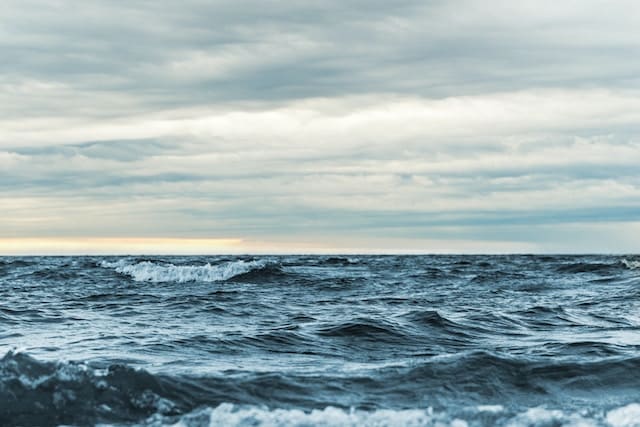
How to Handle Rough Water
Handling rough water is an art and a science. Some tips include:
- Bracing: Use your paddle against the water surface to stabilize your kayak.
- High and Low Support: Different paddle positions can help you maintain balance in varying wave heights.
- Paddle Feathering: Angling your paddle blades can help you slice through wind and water more efficiently.
Seasonal Considerations
Seasons can have a major impact on sea conditions. For instance, summer might bring about calm and warm waters but also an influx of boaters and marine traffic. Winter, with its fewer crowds, offers tranquility but could present challenges like freezing temperatures and less predictable weather. Always consult local guides or weather forecasts to better understand the conditions you’ll be kayaking in.
With this information, you’re better prepared to tackle a wide variety of sea conditions, making your kayaking adventure not only exhilarating but also safe.
Skills You Need to Master
As with any sport, sea kayaking requires a particular skill set to ensure a safe and rewarding experience. Whether you’re new to the kayaking community or looking to brush up on your abilities, here are some essential kayaking skills, emergency techniques, and why physical fitness matters.
Basic Paddling Techniques
Mastering the basics is the first step to becoming proficient at sea kayaking. Here are some fundamental paddling techniques:
- Forward Stroke: The bread and butter of kayaking, allowing you to move straight ahead.
- Sweep Stroke: Helps in turning your kayak effectively.
- Draw Stroke: Useful for moving sideways or making quick adjustments.
Practicing these strokes in different water conditions can significantly improve your kayaking skills and help you navigate through the sea more efficiently.
Emergency Maneuvers
Accidents and unexpected situations are bound to happen, especially on the open sea. Here are a few emergency skills to master:
- Wet Exit: Knowing how to safely exit your kayak if you capsize is paramount.
- Self-Rescue: Learn how to re-enter your kayak after capsizing, which usually involves a scramble or paddle float rescue.
- T-Rescue: A technique to use with a partner where one kayak is used to right the other.
These maneuvers should be practiced in a controlled environment before heading out to the open sea.
Importance of Physical Fitness
While kayaking might seem like a leisurely activity, it demands a decent level of physical fitness. Strength, endurance, and flexibility are all essential components for effective paddling and maintaining balance.
- Core Strength: Helps with effective paddling and balance.
- Endurance: Long-distance kayaking requires stamina to keep paddling for extended periods.
- Flexibility: A flexible body can make emergency maneuvers easier and reduce the risk of injury.
It’s advisable to follow a fitness regimen that includes cardiovascular exercises, strength training, and stretching. Not only will this help you become a more proficient kayaker, but it also adds an extra layer of safety.
Mastering kayaking skills goes beyond just knowing how to paddle. It involves preparing for emergencies and maintaining a level of physical fitness that can support you through your sea adventures. Like any sport, the more you practice, the more skilled you’ll become, making each trip more enjoyable than the last.
Unique Sea Kayaking Experiences
The thrill of sea kayaking isn’t limited to daytime expeditions or going it alone. Several unique experiences can elevate your kayaking adventures to a whole new level. Two such experiences, kayaking with whales and kayaking with manatees, offer memories that’ll last a lifetime.
Kayaking with Whales
Imagine paddling in the vast expanse of the ocean and suddenly being in the presence of the majestic whales. Observing these magnificent creatures up close in their natural habitat is awe-inspiring. As you glide through the water, you might witness a humpback whale breaching or a pod of orcas playfully swimming by your kayak. Such encounters can be both exhilarating and humbling, reminding kayakers of the grandeur of nature. It’s essential to maintain a safe distance and respect the wildlife regulations, ensuring both your safety and that of these incredible marine mammals.
Kayaking with Manatees
Another unique experience you can’t afford to miss is kayaking with manatees. These gentle sea creatures often populate warm, shallow waters, and there’s something indescribably moving about floating quietly alongside them. The interaction feels like a mutual curiosity where manatees often approach kayakers with what seems like genuine interest. Kayaking with manatees gives you a sense of connection with marine life that you simply won’t get from a regular kayak trip.

What Makes a Location Ideal for Sea Kayaking?
Choosing the perfect location for your sea kayaking adventure can significantly influence your overall experience. Factors like water conditions, accessibility, and natural features play a role in determining if a spot is ideal for kayaking. Whether you’re a newbie or an experienced paddler, various aspects should be considered.
Factors for Beginners
For those new to the world of sea kayaking, safety and ease of learning are paramount. Beginners should look for locations with calm waters to ease the learning curve. Proximity to rescue services and the availability of guided kayak tours can also make for a more secure and educational experience.
Example Locations:
- San Juan Islands, Washington: Known for calm waters and beautiful scenery.
- La Jolla, California: Offers guided kayaking trips and is renowned for its clear, tranquil waters.
Factors for Experienced Paddlers
For the experienced paddler, the ideal location offers a wide range of challenges and natural beauty. You’d probably enjoy locations that offer a mix of calm and rough waters, allowing you to test your skills against waves and currents. The availability of natural features like sea caves, arches, and unique marine life also enhances the experience.
Example Locations:
- Sea of Cortez, Mexico: Offers challenging conditions and diverse marine life.
- Apostle Islands, Wisconsin: Known for its sea caves and occasionally rough waters. Tours available here.
It’s essential to note that the suitability of these locations can change over time due to weather conditions, water temperatures, and other factors. Always do your research and perhaps consult locals or join kayaking tours to get the most current information. Regardless of your skill level, the perfect kayaking location is out there, waiting for you to discover it.
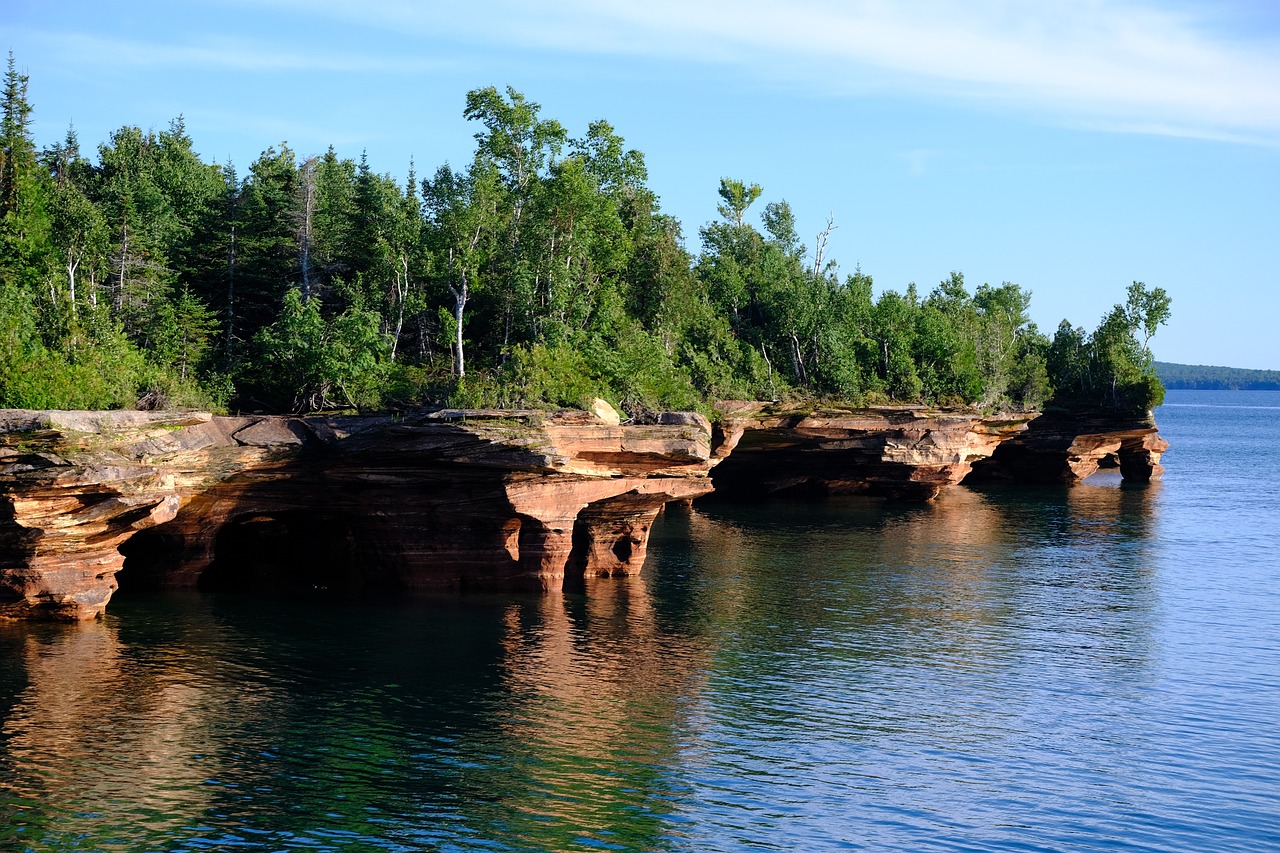
Frequently Asked Questions
What is special about a sea kayak?
Sea kayaks are uniquely designed for open-water conditions. They’re typically longer and narrower than recreational kayaks, offering better stability and efficiency in ocean currents. They often come with features like sealed storage compartments and rudders for improved tracking.
Is a longer kayak better for the ocean?
Yes, longer kayaks generally offer better speed and tracking capabilities, making them ideal for ocean paddling. They can cut through waves and currents more efficiently, giving you a smoother ride. However, they can be a bit harder to maneuver, so they may not be the best option for tight spaces or shallow areas.
What are the best sea conditions for kayaking?
For beginners, calm and clear waters with mild currents are the best for a safe and enjoyable experience. Experienced paddlers may seek more challenging conditions like rough waters or strong currents to test their skills. Always check weather forecasts and consult local experts before heading out.
Do you need a wetsuit for sea kayaking?
The need for a wetsuit depends on the water temperature and weather conditions. In colder environments, a wetsuit or dry suit is highly recommended to prevent hypothermia. In warmer settings, you might be comfortable in just a swimsuit and a long-sleeve UV-protective shirt.
Do sea kayaks capsize easily?
Sea kayaks are generally more stable than other kayak types due to their design. However, they are not entirely immune to capsizing, especially in rough conditions. Knowing how to execute a self-rescue is crucial when sea kayaking.
What are the different types of kayaks?
There are several types, including recreational kayaks, touring kayaks, inflatable kayaks, and tandem kayaks, among others. Each type is designed for specific conditions and activities, so choosing the right one for your needs is essential.
Is it safe to paddle in the sea?
Paddling in the sea can be safe if you are well-prepared and informed. Make sure you have the proper gear, know the local conditions, and have at least basic emergency and navigational skills. Always let someone know your itinerary and when you expect to return.
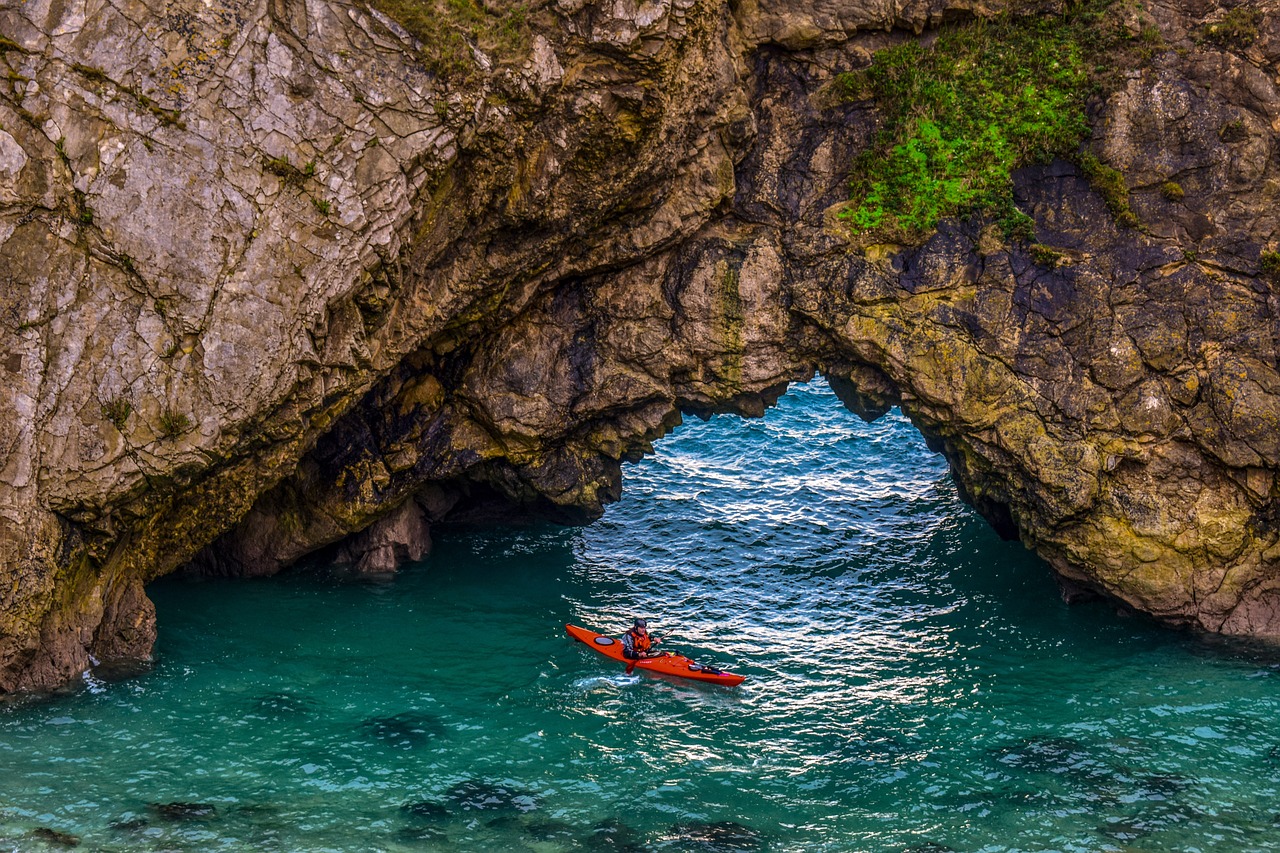
Conclusion
You’ve made it to the end of our guide, and hopefully, you’re as excited as we are about the boundless possibilities that sea kayaking offers. From understanding the unique features of sea kayaks to mastering essential skills and gear, we’ve covered a lot of ground. Now, all that’s left is for you to dive in—quite literally—and embark on your own sea kayaking journey. Whether it’s paddling in calm waters or facing the thrill of the rough sea, the ocean awaits your adventure.
Don’t miss out on this incredible experience. Dive deeper into our blog for more water sports insights and tips, and get ready to make some waves!
